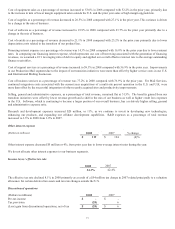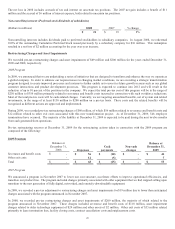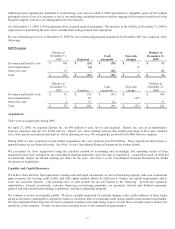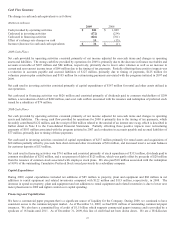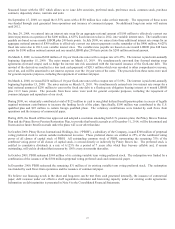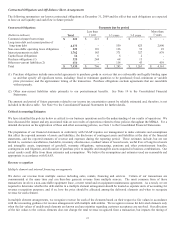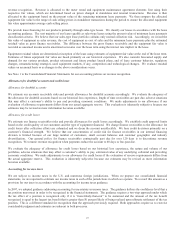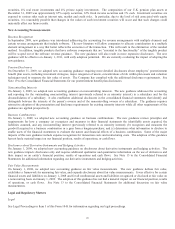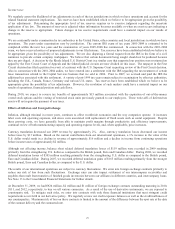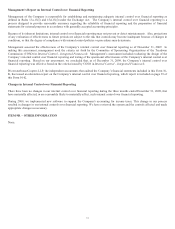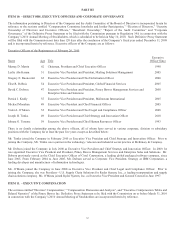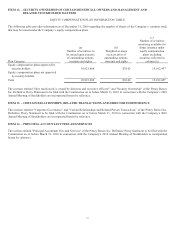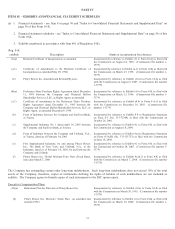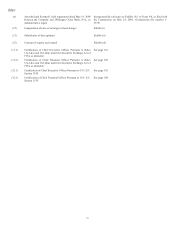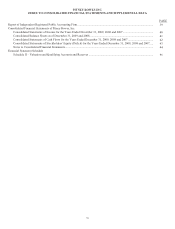Pitney Bowes 2009 Annual Report Download - page 46
Download and view the complete annual report
Please find page 46 of the 2009 Pitney Bowes annual report below. You can navigate through the pages in the report by either clicking on the pages listed below, or by using the keyword search tool below to find specific information within the annual report.28
securities, 4% real estate investments and 4% private equity investments. The composition of our U.K. pension plan assets at
December 31, 2009 was approximately 67% equity securities, 32% fixed income securities and 1% cash. Investment securities are
exposed to various risks such as interest rate, market and credit risks. In particular, due to the level of risk associated with equity
securities, it is reasonably possible that changes in the values of such investment securities will occur and that such changes could
materially affect our future results.
New Accounting Pronouncements
Revenue Recognition
In September 2009, new guidance was introduced addressing the accounting for revenue arrangements with multiple elements and
certain revenue arrangements that include software. The new literature will allow companies to allocate consideration in a multiple
element arrangement in a way that better reflects the economics of the transaction. This will result in the elimination of the residual
method. In addition, tangible products that have software components that are “essential to the functionality” of the tangible product
will be scoped out of the software revenue guidance. The new guidance will also result in more expansive disclosures. The new
guidance will be effective on January 1, 2011, with early adoption permitted. We are currently evaluating the impact of adopting the
new guidance.
Pension Disclosures
On December 31, 2009, we adopted new accounting guidance requiring more detailed disclosures about employers’ postretirement
benefit plan assets, including investment strategies, major categories of assets, concentrations of risk within plan assets and valuation
techniques used to measure the fair value of assets. The Company has complied with the additional disclosure requirements. See
Note 19 to the Consolidated Financial Statements for our postretirement benefit plan disclosures.
Noncontrolling Interests
On January 1, 2009, we adopted new accounting guidance on noncontrolling interests. The new guidance addresses the accounting
and reporting for the outstanding noncontrolling interest (previously referred to as minority interest) in a subsidiary and for the
deconsolidation of a subsidiary. It also establishes additional disclosures in the consolidated financial statements that identify and
distinguish between the interests of the parent’s owners and of the noncontrolling owners of a subsidiary. The guidance requires
retroactive adoption of the presentation and disclosure requirements for existing minority interests while all other requirements of the
guidance are applied prospectively.
Business Combinations
On January 1, 2009, we adopted new accounting guidance on business combinations. The new guidance revises principles and
requirements for how a company (a) recognizes and measures in their financial statements the identifiable assets acquired, the
liabilities assumed, and any noncontrolling interest (previously referred to as minority interest); (b) recognizes and measures the
goodwill acquired in a business combination or a gain from a bargain purchase; and (c) determines what information to disclose to
enable users of the financial statements to evaluate the nature and financial effects of a business combination. Some of the major
impacts of this new guidance include expense recognition for transaction costs and restructuring costs. The adoption of this guidance
has not had a material impact on our financial position, results of operations, or cash flows.
Disclosures about Derivative Instruments and Hedging Activities
On January 1, 2009, we adopted new accounting guidance on disclosures about derivative instruments and hedging activities. The
new guidance impacts disclosures only and requires additional qualitative and quantitative information on the use of derivatives and
their impact on an entity’s financial position, results of operations and cash flows. See Note 13 to the Consolidated Financial
Statements for additional information regarding our derivative instruments and hedging activities.
Fair Value Measurements
On January 1, 2008, we adopted new accounting guidance on fair value measurements. The new guidance defines fair value,
establishes a framework for measuring fair value, and expands disclosures about fair value measurements. It was effective for certain
financial assets and liabilities on January 1, 2008 and for all nonfinancial assets and liabilities recognized or disclosed at fair value on
a nonrecurring basis on January 1, 2009. The adoption of this guidance has not had a material impact on our financial position, results
of operations, or cash flows. See Note 13 to the Consolidated Financial Statements for additional discussion on fair value
measurements.
Legal and Regulatory Matters
Legal
See Legal Proceedings in Item 3 of this Form 10-K for information regarding our legal proceedings.



